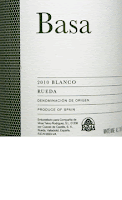There is only one method of making Champagne and that is the Traditional Method, or Methode Champenoise. There are three other methods of producing sparkling wine that can be employed elsewhere. These are the transfer method, the tank method and the asti method. The rest of the world may still choose to make wine in the traditional way but, as we have already learned, cannot call it a Champagne. Whatever method is chosen will have an effect on the aroma and flavor profiles of the final product.
To make wine in the traditional method, only two pressings of the grapes are allowed before the first fermentation. Pressing is the manner in which the juice is extracted from the grapes. It occurs exactly as it sounds. A still wine is produced and may be used alone or may be blended with another still wine of a different grape or from another vintage. After this base wine is produced, a mixture of sugar and yeast (liqueur di tirage) is added. The wine is then bottled, where it will go through a second fermentation.
After an appropriate amount of aging occurs, the bottles are placed in racks neck down. For six to eight weeks thereafter, a person known as the Riddler (Remueur) turns each bottle a slight and modestly downward until the sediments are resting in the neck of the bottle. What then follows then is degorgement, where the bottle necks are dipped into a solution that freezes them. Once frozen, the temporary cap is removed and the settled particles fly forth from the bottle. The final stage is dosage. This is where the wine's sweetness level is determined, when a mixture of wine and sugar is added before final bottling.
When the transfer method is used, all the steps of the traditional method are employed, until the riddling stage is reached. Instead of going through that process, the bottles are emptied into a pressurized tank where the wine is filtered then rebottled. This method makes it easier to maintain consistency bottle to bottle and will maintain most of the quality of a traditional Champagne, but at a lower price. The label may give you a clue that this method is employed if it says, “Bottle Fermented.” This is to distinguish it from a traditional method wine that may say, “Fermented in this Bottle.”
With the tank method (also called the Charmat method), fermentation takes place in a stainless steel tank. These tanks are sealed to prevent carbon dioxide from getting free and yeasts can be easily filtered out without interrupting the fermentation process. Since the yeasts are filtered out, these wines will be lighter and will show more of the fruit’s varietal character than those fermented in the bottle. Wines made in the traditional method will have more contact with the yeast during fermentation, so there will be a more bread-like (yeasty) aspect to these wines. It is also a less expensive method of production and the prices of the ultimate wine will reflect that.
The asti method does not begin with the production of a still wine. The freshly pressed juice, or must, is stored near freezing until it is ready for production. Once “called,” the must is warmed and placed in pressurized tanks for fermentation until the alcohol level reaches 7 to 7.5%. The wine is then chilled, filtered and bottled for immediate distribution.
Champagne may control the name, it does not control the market. There are several delicious sparkling wines made around the world, using several different grape varietals and going by different names. Outside Champagne, but still within France, these gems are called “Cremant.” Germany and Austria produce “Sekt.” Spain makes “Cava.” Italy is famous for a few breeds of nose-ticklers. “Prosecco” can either be “spumante,” which is a standard sparkling wine, or “frizzante,” a lighter sparkling example. The other is Piemonte’s Asti DOCG, where fruitier, sweeter wines reign supreme.
Tasting Exercise
For this exercise, choose one wine made in the tank method and one made in the traditional method (which should be marked, "Methode Champenoise,” "Methode Traditionnelle,” "Metodo Tradicional,” etc). Sekt, Asti and most Proseccos will be made from the tank method. Cava, Cremant and, of course, Champagne will be made from the traditional method. In the New World, the bottle should tell you if the traditional method is used, as it is a great marketing tool. Try to stay within the same sweetness category.
How do the wines contrast in flavor? Can you taste the yeast in the classic method wine? Pay attention to the size of the bubbles in each; how long do they last? They should live longer with the traditional method.
On The Label
Champagne, Sparkling Wine, Cremant, Cava, Prosecco, Sekt, Spumante, Frizzante, Lambrusco, “Bottle-Fermented”, “Fermented in this Bottle”
In The Bottle
Green fruit, stone fruit, mineral, chalk, bread, nut
At The Table
Aperitif, oysters, caviar, sushi, fried food, egg, fruit
Photo Credits:
Couple w/Champagne - http://www.lordprice.co.uk/DRCC1012.html
Riddling - http://www.exploratorium.edu/cooking/webcasts/process/images/5-riddling.jpg






































